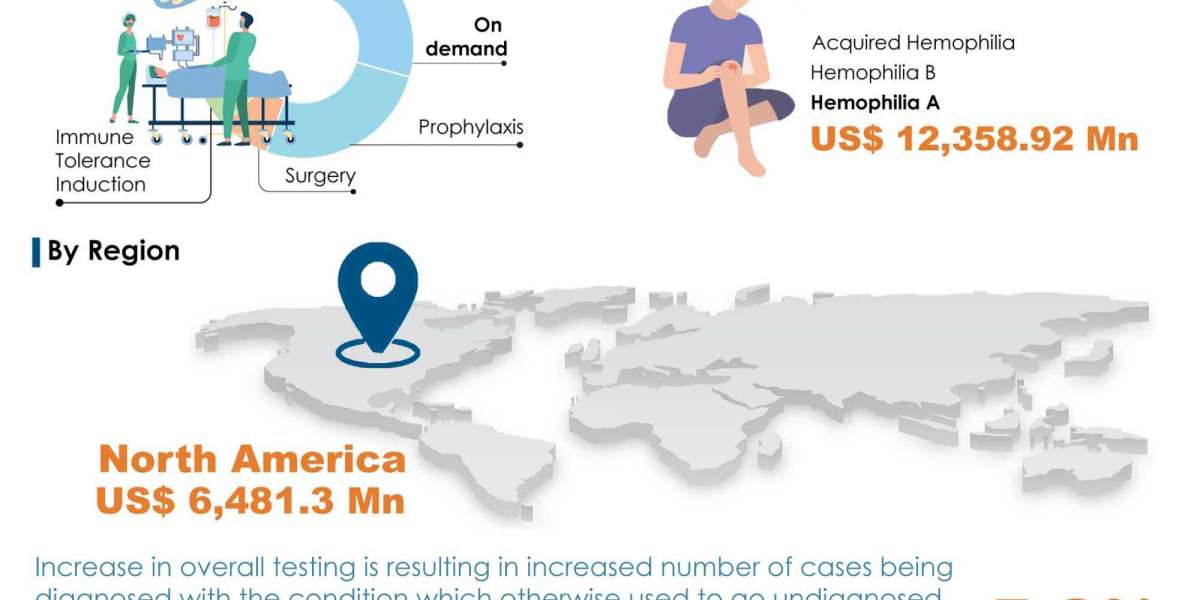The hemophilia treatment market in the Middle East is set to experience robust revenue growth in the coming years, according to a recent report by Fairfield Market Research. With the global hemophilia treatment market registering revenue worth US$14,785.4 Mn in 2021, it is projected to witness a healthy compound annual growth rate (CAGR) of 5.2% during the assessment period of 2022-2027, ultimately reaching a market value of US$21,349.6 Mn.
The introduction of novel therapeutics is expected to be the primary driver of market growth. Advanced treatment options such as extended half-life factor concentrates, biphasic antibodies, and gene therapy/editing have significantly improved the treatment of individuals with hemophilia. Extended half-life factor concentrates have reduced the burden of care for patients and enabled the maintenance of significantly higher factor trough levels during regular replacement therapy. Hemlibra (emicizumab), known for its solid efficacy and convenient dosing, is gradually gaining market share at the expense of older hemophilia treatments.
Read More: https://www.fairfieldmarketresearch.com/report/hemophilia-treatment-market
The development of safe and effective gene therapy solutions presents lucrative growth opportunities in the hemophilia treatment market. Several hemophilia gene therapies are poised to enter late-stage clinical trials, paving the way for this innovative treatment alternative. While successful gene therapies for hemophilia A and B face different challenges, biotech companies have primarily focused on hemophilia B due to the larger market size of hemophilia A. The potential for personalized medication is expected to contribute significantly to the growth of the hemophilia treatment market.
Although developed countries currently hold a majority market share, the Middle East region is projected to witness substantial growth. Presence of major market players in North America and Europe contributes to the highest revenue generation in these regions. Moreover, higher healthcare spending capacity, availability of government rebates, and increased awareness about available treatment options drive the growth of the hemophilia treatment market in these regions. In the Middle East, the demand for advanced treatments is rising, supported by availability at relatively lower costs and the region's growing patient population. During the forecast period, the Middle East is expected to exhibit a significant CAGR of 7.2%.
Despite the positive market outlook, certain challenges may hinder market growth. The relative lack of awareness and inadequacy of reliable and cost-effective treatment solutions, particularly in developing economies, continue to impede the expansion of the hemophilia treatment market. The safety and efficacy of newly launched treatments may also pose limitations, affecting their adoption. Additionally, the high cost of advanced treatments, coupled with limited government rebates, results in higher out-of-pocket expenses for patients, thereby limiting the demand for advanced hemophilia care.
Key market players, including Bayer AG, BioMarin Pharmaceuticals, Inc., F. Hoffman La Roche Ltd., Grifols S.A., Sanofi, Takeda Pharmaceuticals Company Ltd., CSL Behring, Medexus Pharmaceuticals Inc., Novo Nordisk, Octapharma AG, and Pfizer Inc., prioritize research and development initiatives and geographic expansion to strengthen their global market positioning.
More Information: https://www.fairfieldmarketresearch.com/





